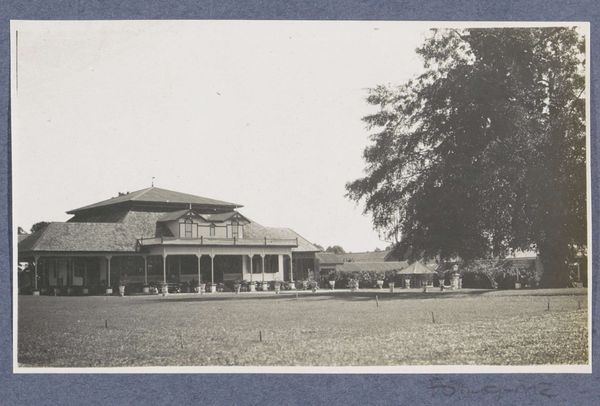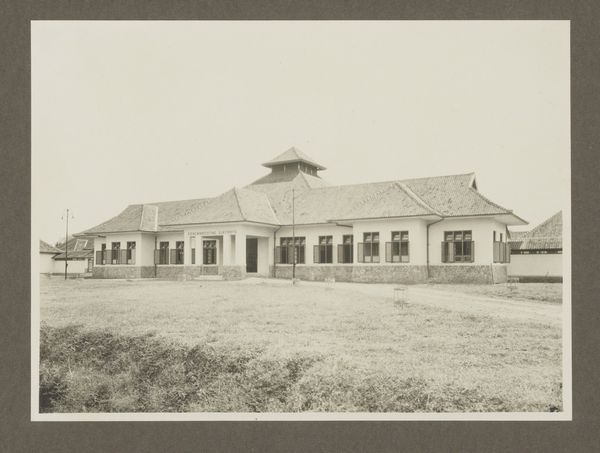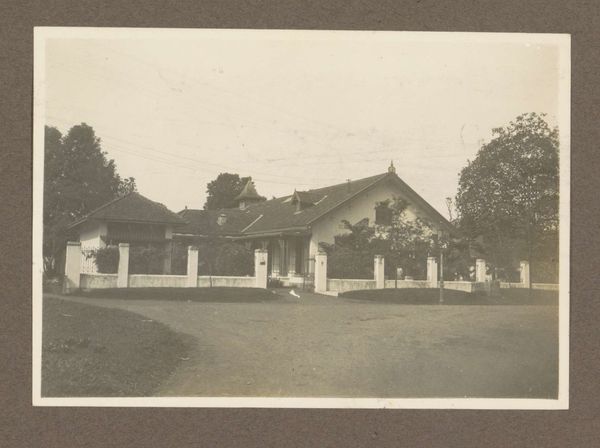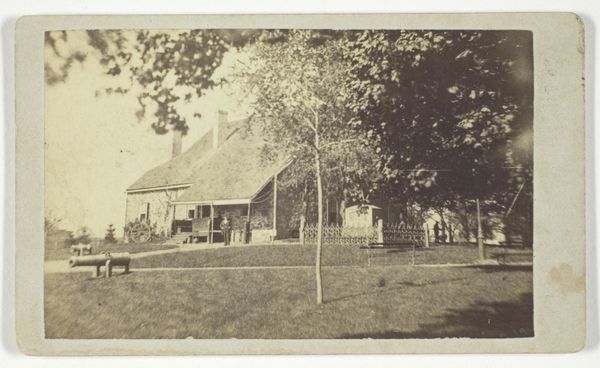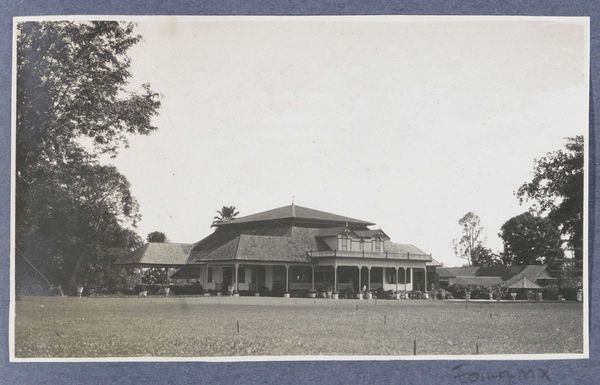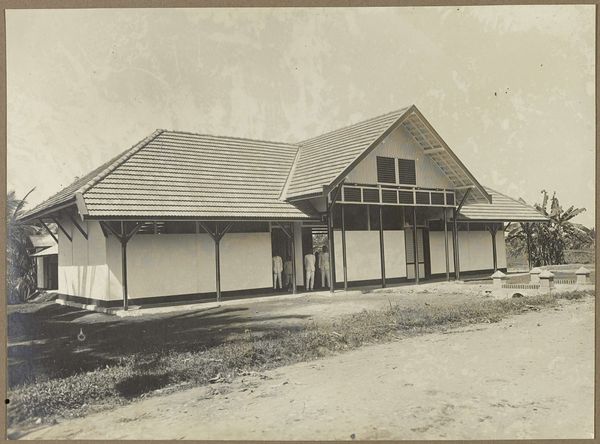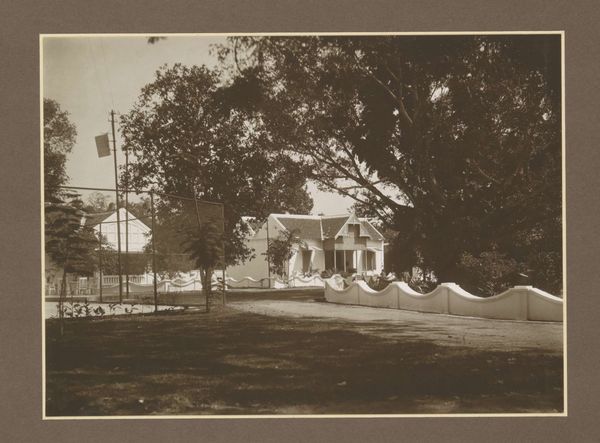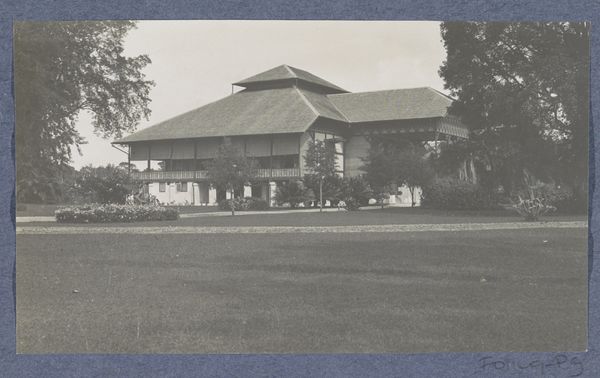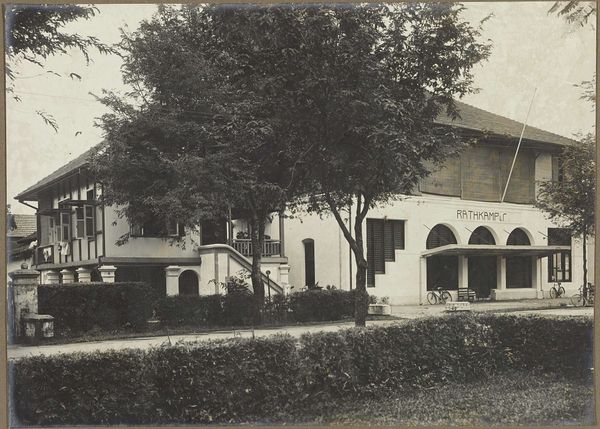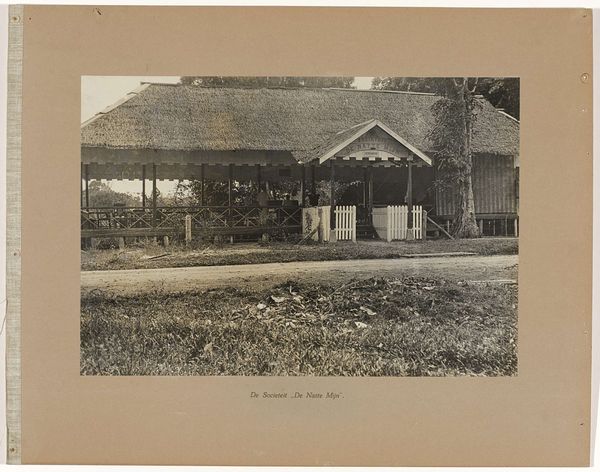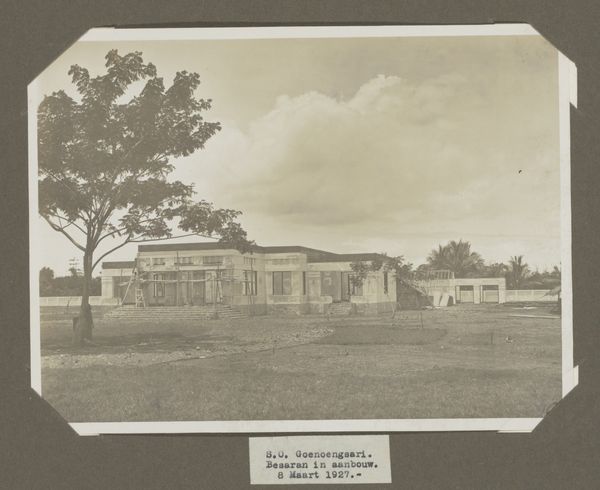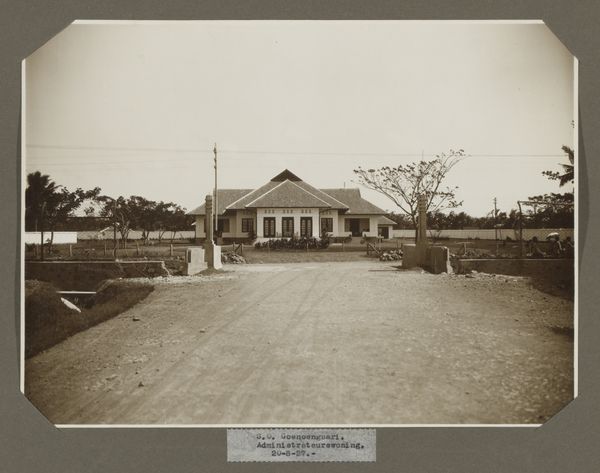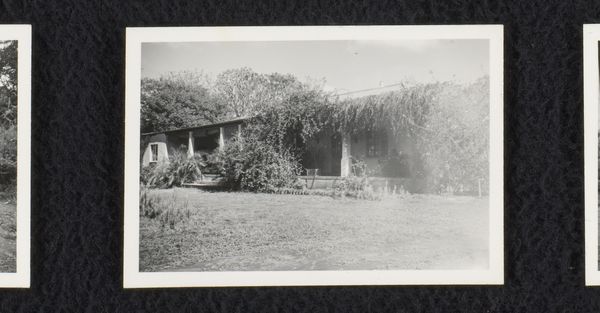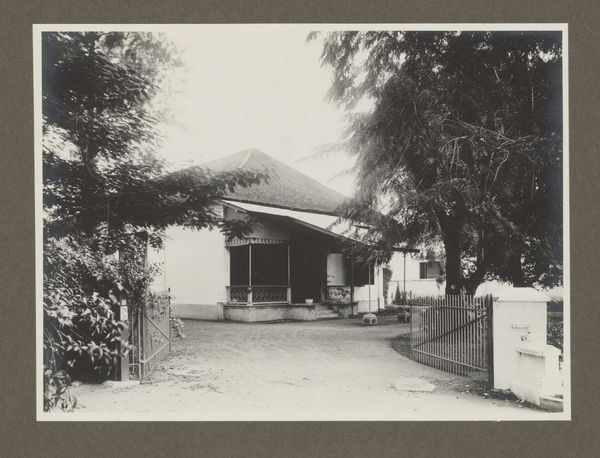
photography, architecture
#
landscape
#
archive photography
#
photography
#
historical photography
#
architecture
Dimensions: height 90 mm, width 121 mm
Copyright: Rijks Museum: Open Domain
Editor: We're looking at a photograph titled "Pendopo van de Prinses Juliana School" from 1933. It appears to be an architectural photograph capturing an open-air pavilion. The monochrome palette really highlights the texture of the tiled roof and the intricate woodwork. What catches your eye about this particular piece? Curator: I see a record of colonial material culture. The construction itself – the use of timber, the tilework – points to specific resources, labor practices, and techniques available at the time and the relationship to the Dutch East Indies’ economic system. Editor: So, it's less about the artistic composition and more about the socio-economic factors influencing its creation? Curator: Exactly. Think about where these materials originated. How were they extracted and transported? Who was involved in the building's construction, and under what conditions? It’s an investigation of how imperial power manifested in built form, commodifying the land through the school that exists today. Editor: That’s fascinating. I hadn’t considered the exploitation element in building the pendopo. How does this understanding shift our appreciation, or perhaps our critique, of the image itself? Curator: By seeing the image as a document, we shift from aesthetic judgment to critical inquiry. Instead of just appreciating the visual aspects, we confront the power dynamics embedded within the materials and production processes that were used. Where can we source this to better reveal the processes that went into its creation? Editor: That really encourages us to think beyond the surface level and to investigate the broader implications of art and architecture. Thanks, it's really eye-opening! Curator: Indeed! It reminds us that art, or any creation, is not produced in a vacuum but reflects and reinforces larger material and social structures.
Comments
No comments
Be the first to comment and join the conversation on the ultimate creative platform.
